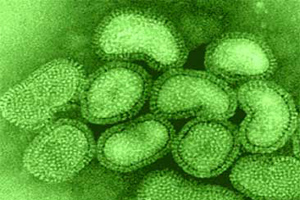Blood samples hint at silent H7N9 in poultry workers

A serology study in a Chinese province hit hardest by novel H7N9 influenza found evidence of asymptomatic or mild infections in poultry workers, further strengthening suspicions that poultry are the source of the outbreak.
The study focused on members of the general public, poultry workers, and patients with lab-confirmed H7N9 infections in Zhejiang province, which has recorded 45 cases during the outbreak thus far. The Chinese researchers published their findings in the Aug 9 early online edition of the Journal of Infectious Diseases.
They collected and analyzed serum samples, along with epidemiologic data, from 1,129 people from three Zhejiang cities in the province that had human H7N9 cases. The group also collected serum samples and nasal swabs from 396 people who had occupational exposure to poultry in districts where human cases had been found.
Among poultry workers, 6.3% had antibodies against the new H7N9 virus, based on hemagglutinin inhibition (HI) assay titers of 80 or greater. In contrast, the investigators found no evidence of antibodies in the general population. No viral evidence was found in the workers’ nasal swab samples.
The results weren’t surprising, because a study more than a decade ago in poultry workers showed a similar seroprevalence to avian H7 subtypes, according to the report.
“Our data support the conclusion that H7N9 virus or a closely related virus is circulating in live poultry markets and that infected poultry is the principal sources for human infections,” they wrote.
Serum findings in poultry workers also hint that subclinical infections occur. However, the researchers noted that an earlier study using blood samples collected from poultry workers in four provinces found no evidence of H7N9 exposure, suggesting that the workers in Zhejiang only recently developed the antibodies against the virus.
The team said it’s possible that the H7N9 antibodies they detected in the poultry workers might reflect exposure to other similar H7 avian influenza viruses, including an H7N3 virus that affected ducks in the regions.
The lack of findings in the general population could signify that cross-species transmissions are recent and sporadic events, and the ability of H7N9 to spread between humans is so far limited, the team concluded.
Source: CIDRAP












